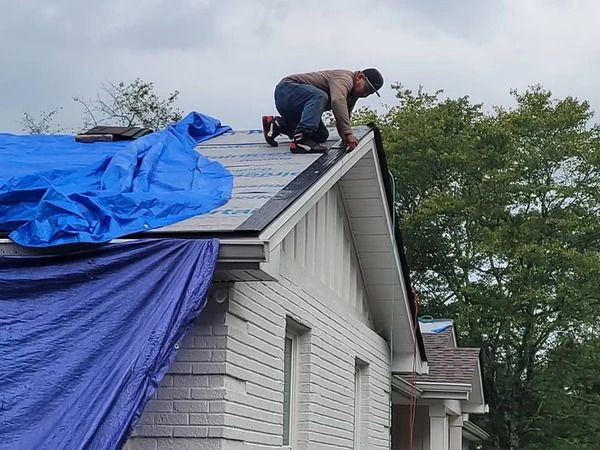Roofing is important for any home for so many reasons.
Not only does your roof keep your home warm and dry, but it also helps protect your landscaping and manage water runoff properly all year long.
Being sure that your roof is set up correctly matters so that you don’t end up with flooding, damage to your gutters or roof shingles, or issues with mold.
A drip edge is an important part of a roof that keeps your home dry and warm all year round.
You need to know what a drip edge is and what it can do for your home’s well-being before you consider replacing your roof.
If you are building a new home or business location, a proper roof is a key element of the construction job.
What is a Drip Edge?
A metal roof drip edge is a strip of metal flashing that is installed at the edge of the roof. It is placed on both sides of the eaves.
The purpose of this roof component is simple: it protects the roof’s edge and it also sends water away from the parts of your home that need to be protected from moisture.
The drip edge is a critical part of any roof.
Older roofing designs don’t always have this component, and you can easily tell that this is the case if you see water sheeting off the edge of the roof and running down the siding of the home.
Even new siding materials don’t do well when they are constantly soaked with water runoff, so you will want to avoid this issue even if you have new siding on your home.
Drip edging is often made of aluminum, but you might also be able to buy drip edging made of copper or galvanized steel.
Copper is durable, but it is often quite expensive.
It can offer up a really unique appearance, which might be perfect for the aesthetic that you are going for.
There are also plastic and vinyl drip edges, but metal is the usual choice due to its durability and its ability to keep pests and rodents at bay for years to come.
You might have to opt for non-metal drip edging in some cases, but you should have no trouble getting standard metal drip edging in most locations around the country.
What Does a Drip Edge Do?
The drip edge on your roof directs water away from the siding or shingles.
When you don’t have a drip edge, water can sheet down the sides of your home or office space, and it will likely get under the siding.
Water invading the space between your siding or shingles and the underlying layers of the wall of your home can lead to mold, damage to the insulation, and damage to the interior of your home.
You do not want to let water run down the sides of your home for the sake of your foundation as well.
Foundations can handle being damp, but they are not built to hold up well when they are exposed to standing water for long periods of time.
If you have a basement, you might also experience issues with standing water in your basement if you don’t have a drip edge on your roof.
Drip edges also stop ice dams from forming.
If you have really cold winters, standing water can form against the roof’s edge, leading to problems with water pooling and freezing.
This can cause water incursion through roof vents or damage to roofing materials that can lead to leaks in the ceiling of your home.
Your drip edge will also send water in the right direction, which should be toward gutters and drainage that will take water off your property and down into storm or sewer drains.
Lastly, the drip edge acts as a barrier to protect the gap between the roof deck and the fascia under it.
This helps keep pests like rodents and insects from invading the spaces under the edge of your roof and moving into the attic.
You do not want to have to get rid of bugs and pests, and installing a drip edge can save you tons of money on extermination in the long term.
A drip edge is not expensive, and modern roof designs will always include this feature.
Even if your original roof did not have a drip edge on it, you should consider adding one when you upgrade or replace roofing materials.
The benefits of this roof design element far outweigh the cost of installing it.
Ultimately, you need to look at the climate, your budget, and the overall appearance of your roof before you select a drip edge product for your roofing.
If you are not sure which material is right for your project, you can always ask for some advice from your roofing installation team.
They should know which materials are ideal for your area.
Drip Edges Ensure That Your Roof and Your Home Are Protected From Tough Weather
When it comes to taking care of your home, preventing damage to your house due to the weather should be at the top of your list.
You don’t want water invading your basement, standing against the foundation of your home, or standing on your roof and causing damage.
Water, ice, and snow can cause a lot of damage to your property as a whole.
Managing water runoff is a key part of keeping your home or business in good condition for years to come.
Drip edging is an important part of any roof design. It prevents water from running down the sides of your home, and it keeps water from pooling in places that cannot handle exposure to moisture.
You will save a ton of money in the long run by taking the time to install a drip edge on your roof.
Between preventing pest issues and getting ahead of problems with snow and rain, your drip edge will keep your home safe and secure for years to come.



